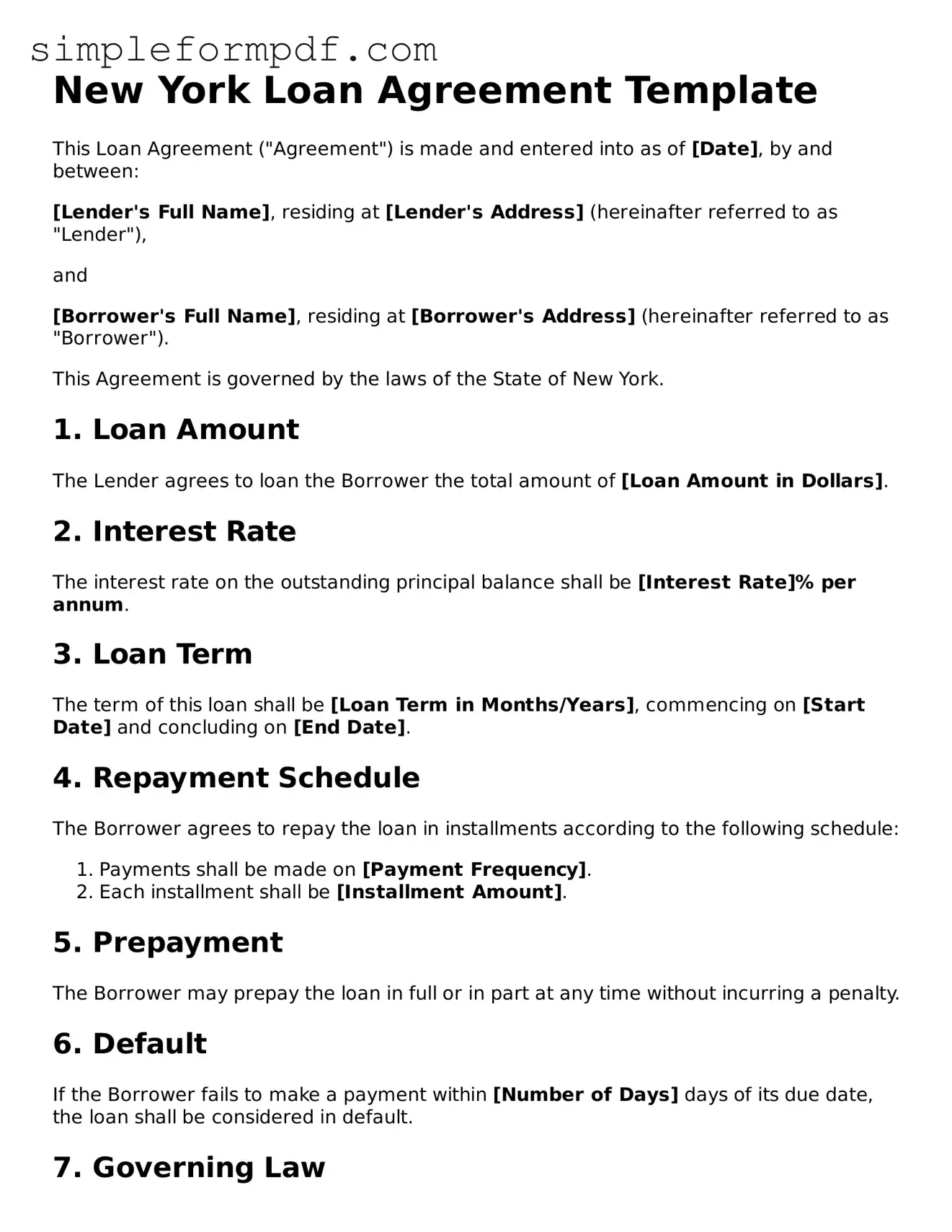New York Loan Agreement Template
This Loan Agreement ("Agreement") is made and entered into as of [Date], by and between:
[Lender's Full Name], residing at [Lender's Address] (hereinafter referred to as "Lender"),
and
[Borrower's Full Name], residing at [Borrower's Address] (hereinafter referred to as "Borrower").
This Agreement is governed by the laws of the State of New York.
1. Loan Amount
The Lender agrees to loan the Borrower the total amount of [Loan Amount in Dollars].
2. Interest Rate
The interest rate on the outstanding principal balance shall be [Interest Rate]% per annum.
3. Loan Term
The term of this loan shall be [Loan Term in Months/Years], commencing on [Start Date] and concluding on [End Date].
4. Repayment Schedule
The Borrower agrees to repay the loan in installments according to the following schedule:
- Payments shall be made on [Payment Frequency].
- Each installment shall be [Installment Amount].
5. Prepayment
The Borrower may prepay the loan in full or in part at any time without incurring a penalty.
6. Default
If the Borrower fails to make a payment within [Number of Days] days of its due date, the loan shall be considered in default.
7. Governing Law
This Agreement shall be governed by and construed in accordance with the laws of the State of New York.
8. Signatures
By signing below, both parties agree to the terms of this Loan Agreement.
Lender's Signature: _________________________ Date: _______________
Borrower's Signature: _________________________ Date: _______________
Witnessed By:
Witness Name: _________________________ Signature: _______________ Date: _______________
